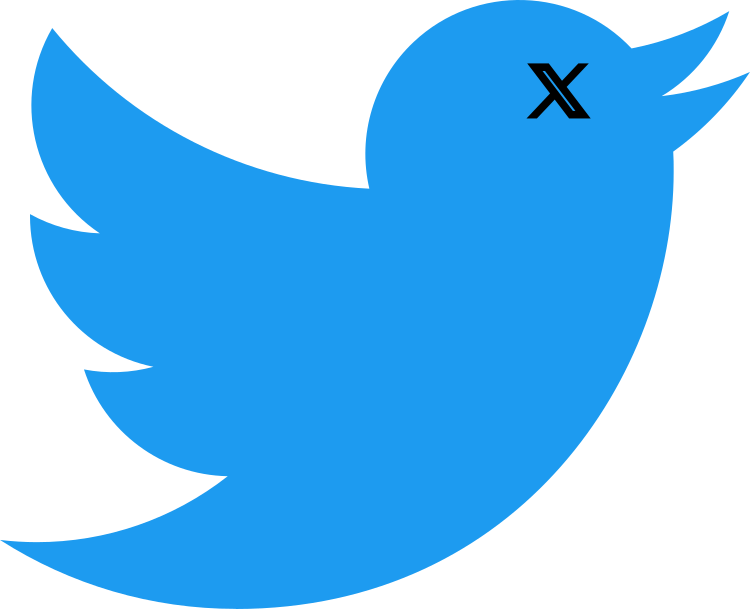 In a surprising move that left the digital world both intrigued and perplexed, Elon Musk, the unconventional billionaire at the helm of many technological ventures, once again made waves with his latest alteration to the social media landscape. Twitter, a platform synonymous with its iconic blue bird logo and vibrant online culture, has undergone a transformation that can only be described as audacious. Musk, who acquired the platform last year, has rebranded Twitter as “X,” replacing the familiar avian emblem with a sleek and enigmatic stylised letter.
In a surprising move that left the digital world both intrigued and perplexed, Elon Musk, the unconventional billionaire at the helm of many technological ventures, once again made waves with his latest alteration to the social media landscape. Twitter, a platform synonymous with its iconic blue bird logo and vibrant online culture, has undergone a transformation that can only be described as audacious. Musk, who acquired the platform last year, has rebranded Twitter as “X,” replacing the familiar avian emblem with a sleek and enigmatic stylised letter.

The overnight shift from the familiar to the unfamiliar has sparked discussions across various spheres. Beyond its visual impact, the rebranding raises deeper questions about the essence of branding itself. For more than a decade, Twitter’s blue bird symbolised not just a digital space, but a virtual lexicon where “tweets” were verbs and “tweeps” were its inhabitants. Musk’s radical departure from this established identity underlines the complexities and challenges of introducing a new ethos to an already entrenched entity.
The strategic rationale behind this rebranding venture can be analysed through a marketing lens. Brands that evolve into verbs, integrating seamlessly into everyday speech, achieve a unique cultural status. Yet, with a single decision, Musk has disrupted the accumulated brand value of over a decade, erasing its influence from our collective consciousness. The shift from the bird to the X is more than a visual transition; it’s a narrative rupture, casting aside years of cultural significance.
Critics have pointed to the abruptness of the change and its potential consequences. The new X logo, described by some as unwelcoming, starkly contrasts with the warmth and familiarity of the blue bird. However, some speculate that Musk’s calculated divergence from the established brand might serve a deeper purpose. By creating this friction around the rebrand, he may be intentionally generating conversation and garnering publicity for what could otherwise be perceived as a trivial alteration.
In the business arena, competitors are primed to seize the opportunity. TikTok, a formidable rival, recently announced a text-only feature expansion, a move aligned with Musk’s broader vision of Twitter’s transformation into a comprehensive super-app. This concept draws inspiration from China’s WeChat, which successfully integrated social networking, payments, e-commerce, and gaming. Yet, the looming question remains: Can the stark X logo effectively align with Musk’s aspiration to redefine Twitter’s multifaceted identity?
Looking ahead, Musk’s experiment with X brings to light a fascinating trajectory for branding and marketing. As digital spaces continue to evolve, the power of symbols and associations becomes increasingly apparent. The rebranding phenomenon unveils the delicate balance between retaining cultural resonance and adapting to a rapidly changing digital landscape. The convergence of technology and branding heralds an era where icons not only symbolise but shape the essence of platforms, products, and experiences. The “X” rebrand, bold and perplexing, stands as a testament to the intricate interplay of identity, innovation, and the ever-shifting tides of consumer sentiment.
However, amidst the intrigue and discourse, a note of caution emerges. The audacious transformation of Twitter into “X” may inadvertently highlight the fragility of even the most entrenched digital identities. Musk’s rebranding gambit, while sparking conversation, risks alienating a dedicated user base. The stark departure from the familiar blue bird could potentially erode user trust and disrupt the delicate equilibrium between innovation and user loyalty. The future of “X” hangs in the balance, with its success hinging on its ability to transcend the ominous overtones of the enigmatic symbol and restore the sense of community that once flourished under the wings of the iconic blue bird.
